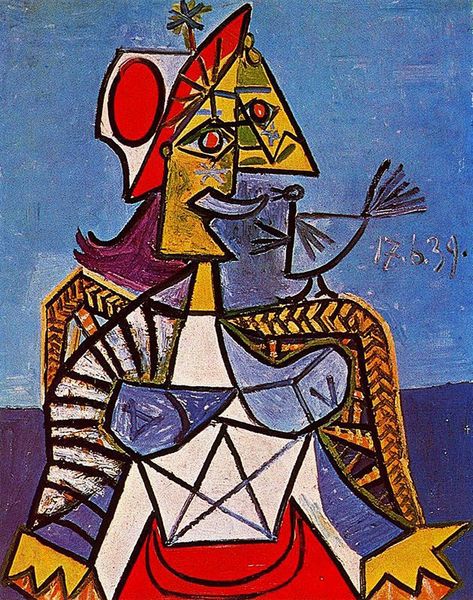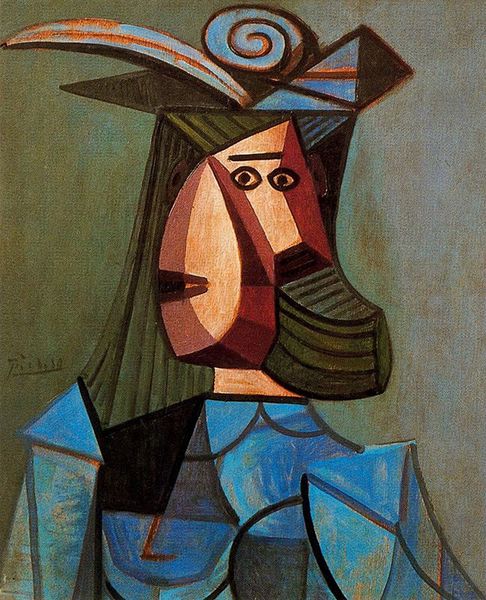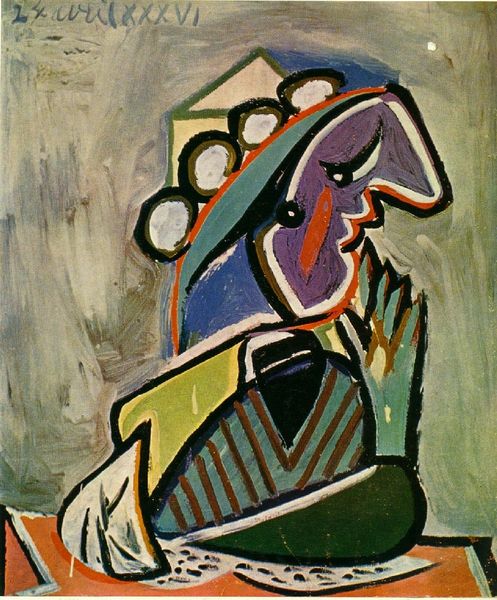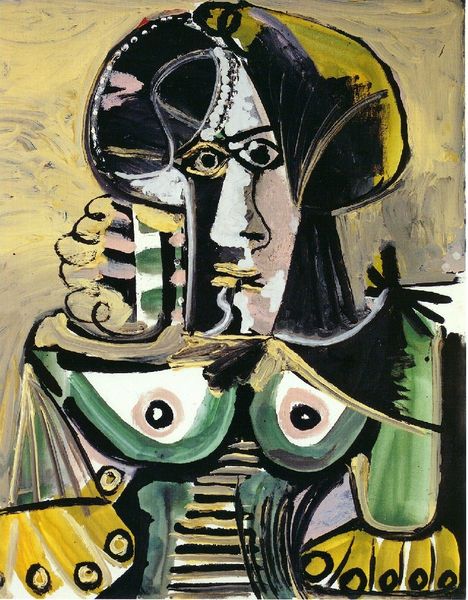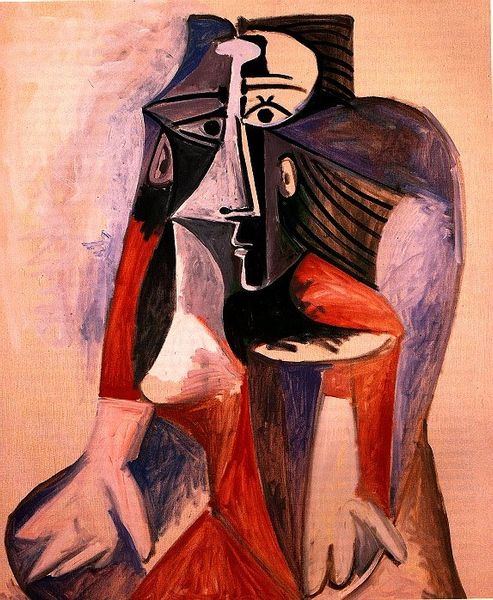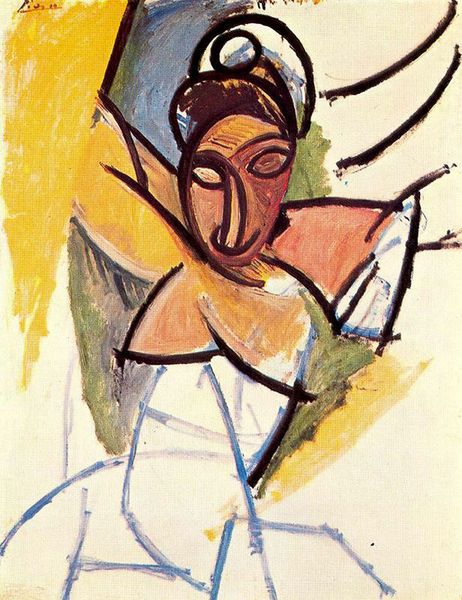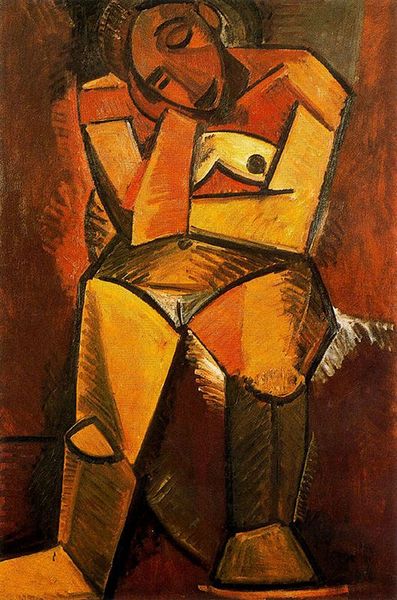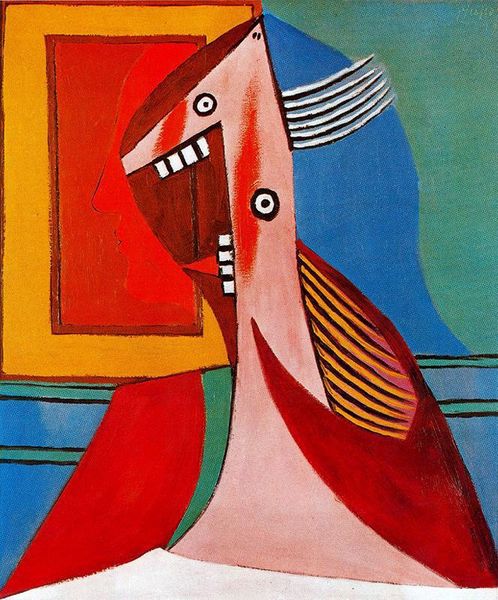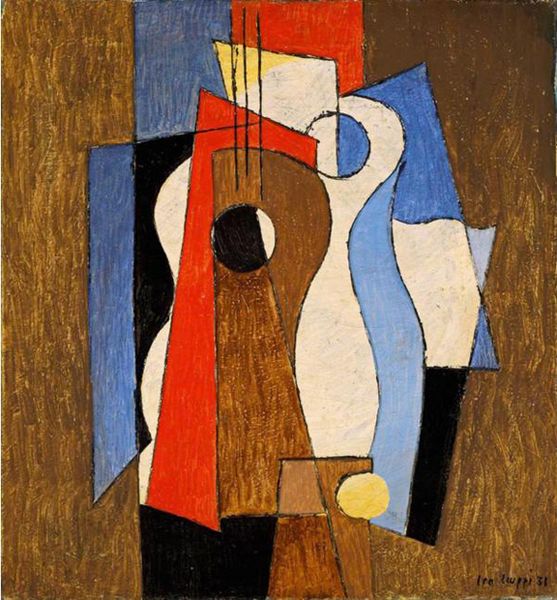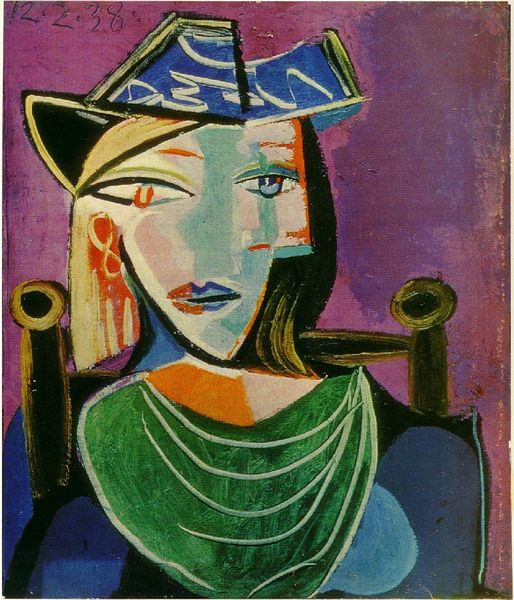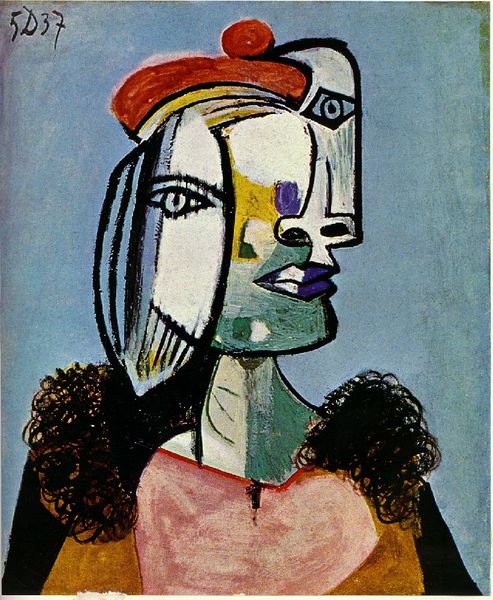
painting, oil-paint
#
portrait
#
cubism
#
painting
#
oil-paint
#
pop art
#
acrylic on canvas
#
geometric
#
abstraction
#
modernism
Dimensions: 130 x 96.5 cm
Copyright: Pablo Picasso,Fair Use
Editor: This is Picasso’s "Seated Woman," painted in 1960 using oil on canvas. It's hard to miss the bold, geometric shapes. What stands out to me is how he fragments the figure, yet it still retains a powerful presence. What do you see in this piece? Curator: What I see is Picasso grappling with representation, particularly of the female form, through the lens of Cubism and the societal expectations placed upon women. The fractured planes, the distorted perspective - they reflect not just a physical deconstruction but also perhaps the fragmented identities women are often forced to inhabit. Think about the period – 1960. Second-wave feminism was on the horizon, challenging traditional roles. Could this portrait be seen as a visual manifestation of that burgeoning questioning? Editor: That’s a fascinating take. I hadn’t considered the feminist angle so directly. I was more focused on the pure aesthetic of the abstraction. Is there something specific in the painting that led you to this interpretation? Curator: Look at the colors he’s chosen. The blues, the blacks – they aren’t necessarily comforting. And that single, large eye staring out… Is it accusatory? Vulnerable? It makes me think about the ways women are often scrutinized, their bodies and their beings dissected and judged. This piece also has ties to Picasso's other depictions of women – do they reflect reverence, critique, or something in between? Editor: That makes me rethink how I see the figure's gaze. So, even though it’s abstract, it still engages with the real world and those power dynamics? Curator: Precisely! Art doesn't exist in a vacuum. Even in its most abstract form, it often reflects, critiques, and engages with the social, political, and cultural contexts of its time. It is key to situate it within that web of meaning and question those initial, intuitive, aesthetic judgments that may reflect more immediate cultural expectations. Editor: I will definitely remember to consider those intersecting narratives in the future! Curator: Exactly. Let's continue thinking of how we can bridge our current experiences with an artwork’s origins to establish broader insights and awareness.
Comments
No comments
Be the first to comment and join the conversation on the ultimate creative platform.

